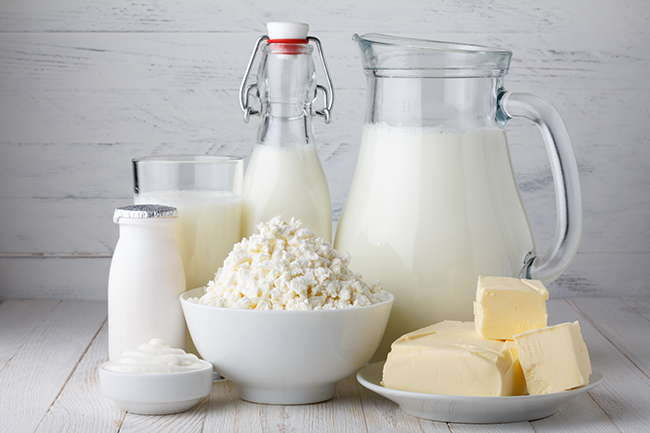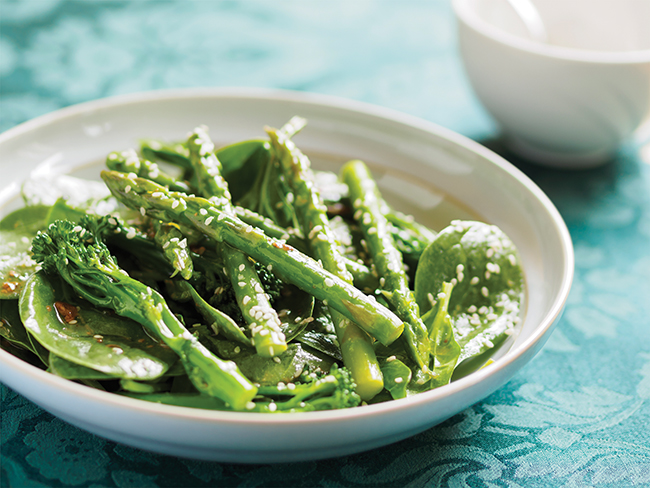Scientist Michelle Kickham looks at how to get all the nutrients your body needs without relying on dairy sources…

Dairy is a somewhat staple source of nutrients in the average diet; and for good reason. It’s high in protein, provides your body with an abundance of essential vitamins and minerals and is also pretty easy on the coin-purse!
However, if you are one of the many now avoiding dairy products, due to either a dietary issue or for ethical reasons, you may find yourself lacking in these vital nutrients and running the risk of developing bone and muscle degradation, among other things.
Here I’ve laid out the top three deficiencies commonly seen in dairy-free diets, along with some tips on how to combat them to ensure you’re diet fulfils your body’s needs and doesn’t result in you breaking a bone next time you trip up the stairs (admit it; we all do this!).
Protein
Dairy-based products such as yoghurt, cheese and milk are some of the main sources of protein in the average diet. Protein is vital for muscle growth, cell repair and metabolic regulation. It is particularly important for teenagers and the elderly to support growth and limit muscle degradation.
If dairy is eliminated from your diet, protein intake can become a bit of an issue. However, there are many alternatives you can easily integrate into your diet to ensure your body is as strong as your will-power to avoid frozen yoghurt (and that’s saying something!)
Combat it
Meat, fish and eggs are the holy grail of protein sources for anybody following a dairy-free diet. However, if you’re following a vegan or vegetarian diet things get a little trickier, but with a few tweaks here and there it’s easily done.
Legumes such as beans, peas, lentils and soybeans are terrific sources of protein that can be added to salads, soups and even into vegan burgers and sausages (such as Dee’s Vegan Range). It’s not all about the beans though (we all know what happens when we overdo the bean intake!) so be sure to include protein-rich grains such as quinoa, brown rice and oats into your diet as well.
In addition, vegan protein powders are excellent sources of protein that are easily blended into your morning smoothie.

Calcium
The biggest selling point of dairy-based products is their exceptionally high calcium content; with up to 35% of your recommended daily intake in just one serving of yoghurt.
We all know how important calcium is for strong bones and healthy teeth, but it’s also vital for muscle contractions, blood clotting (the ones that prevent you bleeding from a paper cut – not the deadly blood clots!) and regulation of your heart rate. Clearly, calcium deficiency is not to be taken lightly and can lead to osteoporosis (weakening of the bones) and other health defects.
Combat it
Calcium isn’t exclusively produced by cows; it doesn’t judge! There are plenty of other sources that can be included in anybody’s diet whether you’re a meat-eater or vegan. Leafy greens like broccoli, spinach and kale are excellent calcium sources along with almonds, sunflower seeds and even chickpeas. If you can stand the taste, sardines are also quite high in calcium, but let’s be honest, they taste pretty bad. I’d stick with the leafy greens, but if this doesn’t fulfil your calcium needs there are plenty of calcium supplements available that will provide you not only with your RDA of calcium but also Vitamin D3 – calcium’s best friend!

Zinc & Phosphorous
Dairy is rich in zinc and phosphorous; two very important minerals in your diet that are often neglected when following a dairy-free diet. Zinc is essential for efficient energy metabolism, nerve function and immunity, while phosphorous is required for the formation of healthy bones and teeth.
Following a dairy-free diet can result in zinc and phosphorous deficiency not only due to the limited sources of them in a dairy-free diet, but also because no-one really thinks about them; they’re neglected! Deficiencies in either of these minerals can result in poor immune function, nerve and muscle pain, osteoporosis and even impairments of the senses (visual, taste and smell). So if you’re following a dairy-free diet be sure to show these two guys some love because what’s the point in eating a cupcake if you can’t even taste it!
Combat it
If you’re a meat-eater, hitting your recommended daily requirement of zinc and phosphorous won’t be an issue, as meat is a plentiful source of both minerals.
If you’re also following a meat-free diet, then the best bet is to pack your diet full of lentils, chickpeas, pumpkin seeds and sesame seeds, which not only top up your zinc and phosphorous tanks, but also bump up your protein and B-vitamin intake; killing two birds with one stone!
Take home message – it doesn’t have to be a major issue
There are risks of dietary deficiencies when adhering to any elimination diet (one where an entire food group is removed) and dairy is no exception. Protein, calcium and minerals such as zinc, phosphorous and many others are often lacking in a dairy-free diet, and which can lead to brittle bones, muscle damage and metabolic impairment.
If you remove a major source of nutrients from your diet (in this case, dairy) you must ensure you are obtaining them from alternative sources. Simply swapping your cereal for a protein shake or throwing some leafy greens and almonds into your next stir-fry is an easy (and tasty!) way to provide your body with all of the ingredients for a strong, healthy and dairy-free body.
About the author
 Michelle Kickham is a doctoral candidate in Immunology and Organic Chemistry and a current Irish Research Council scholar. Michelle believes that science holds the power to make a real difference and her goal is to explain the science behind health claims, offer advice and tips, as well as sharing healthy recipes to suit almost any diet.
Michelle Kickham is a doctoral candidate in Immunology and Organic Chemistry and a current Irish Research Council scholar. Michelle believes that science holds the power to make a real difference and her goal is to explain the science behind health claims, offer advice and tips, as well as sharing healthy recipes to suit almost any diet.
For more information, visit www.lifeliftsandlabcoats.wordpress.com
